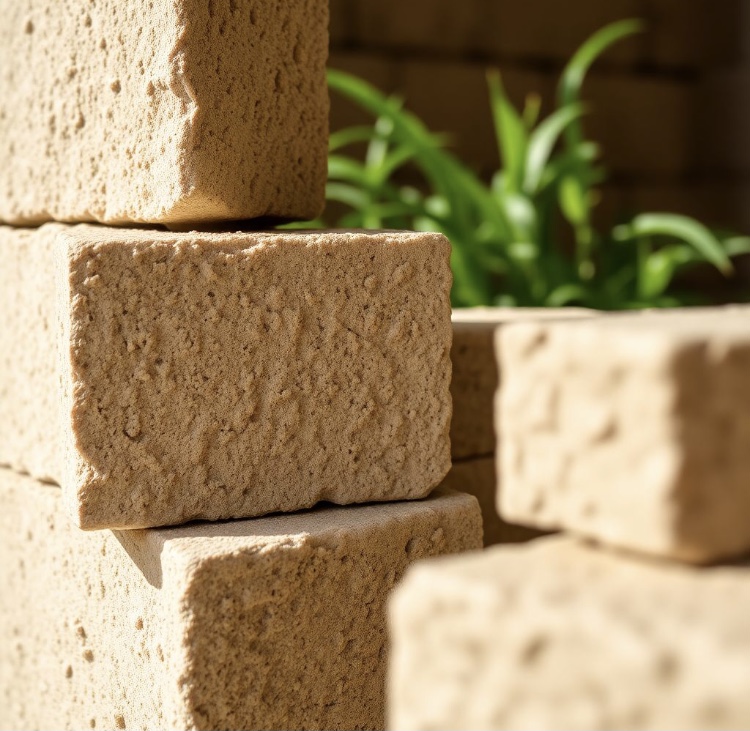It’s no secret that the construction industry is a major contributor to climate change. From increasing environmental waste to depleting natural resources, the industry irreparably hurts the environment. It’s for this reason we need to adopt more eco-friendly solutions, one of which involves utilizing more sustainable building materials.
This is because whether you’re constructing a home, an office, or a commercial structure, the materials you choose play a critical role in the environmental impact of your build. Fortunately, there is a growing list of sustainable materials that combine performance, aesthetics, and eco-friendliness.
Without further ado, here are 5 of the most promising and widely used sustainable building materials you should definitely consider for your next project:
1. Low-Carbon Concrete Alternatives:
Traditional concrete production is one of the largest contributors to global CO₂ emissions. This is largely due to the production process of cement. However, there are so many other sustainable alternatives to traditional concrete, and they work just as well. A couple include:
Sawdust and Wood Ash Concrete: Created using a combination of sawdust, wood ash and cement, it is said to have properties that make it a useful substitute for traditional concrete. In a previous article, we took a deep dive into how to make this sustainable alternative and how to get a sample of it.
Fly ash or slag cement: Fly ash is essentially a by-product of coal production, while slag is a by-product of iron production. Both are usually used to replace a portion of Portland cement in concrete.
Geopolymer concrete: Made through the activation of aluminosilicate materials, geopolymer concrete produces significantly less carbon than traditional concrete.
These concrete alternatives, like traditional concrete, are used for foundations, walls, and pavements, as well as structural elements.
2. Recycled Steel:
Recycled steel is obtained by reclaiming and repurposing steel scraps, instead of producing it from scratch. Not only does using recycled steel reduce mining and the need for resource extraction, but it also reduces environmental waste, making it very sustainable. Recycled steel is also very durable which is why it is usually used for framing, roofing, beams, and structural components.
3. Hempcrete:
A bio-composite material, hempcrete, as the name implies, is made using the woody core of the industrial hemp plant, also known as cannabis. This woody core is typically mixed with a lime-based binder to create this carbon-negative material that is naturally resistant to pests and mold.
Additionally, hempcrete is fire-resistant, lightweight, and has superb thermal and acoustic properties. These therefore make it perfect for insulating walls, floors, and roofs in both residential and commercial buildings.
4. Earth and Rammed Earth:
One of the oldest building materials, mud and rammed earth, are making a steady comeback in modern construction. Known for their thermal mass, minimal processing and durability, these materials are perfect for constructing walls, floors, and foundations. They are usually locally sourced and so require little to no energy consumption or CO2 emissions.
5. Recycled Plastic Composites:
Everyone knows plastics are a menace to the environment. They take decades to degrade and are difficult to get rid of. However, when recycled, plastics make very good building materials.
Their durable and low-maintenance nature makes them resistant to moisture, rot, and insects. Plastics are also versatile, making them reusable for a wide variety of purposes such as decking, outdoor furniture, fencing, structural panels, etc. In addition to this, recycling plastics helps to divert plastic waste from landfills and the ocean.
Conclusion
Choosing sustainable materials is not just about environmental responsibility; it’s also about building smarter, healthier, and more resilient spaces. While the right materials depend on your specific project, location, and budget, integrating eco-friendly options where possible can significantly reduce your carbon footprint and operating costs over time.
Here at Redcity, we prioritize sustainable construction, which is why these materials are our go-to for projects. Check out our products and services here and request a quote here to construct one or two with us. Also, visit our blog here for more enlightening news and updates, and check out our YouTube channel here for a lot of exciting content.
Would you be using any of these 5 sustainable building materials in your next project? Let us know your thoughts below.

